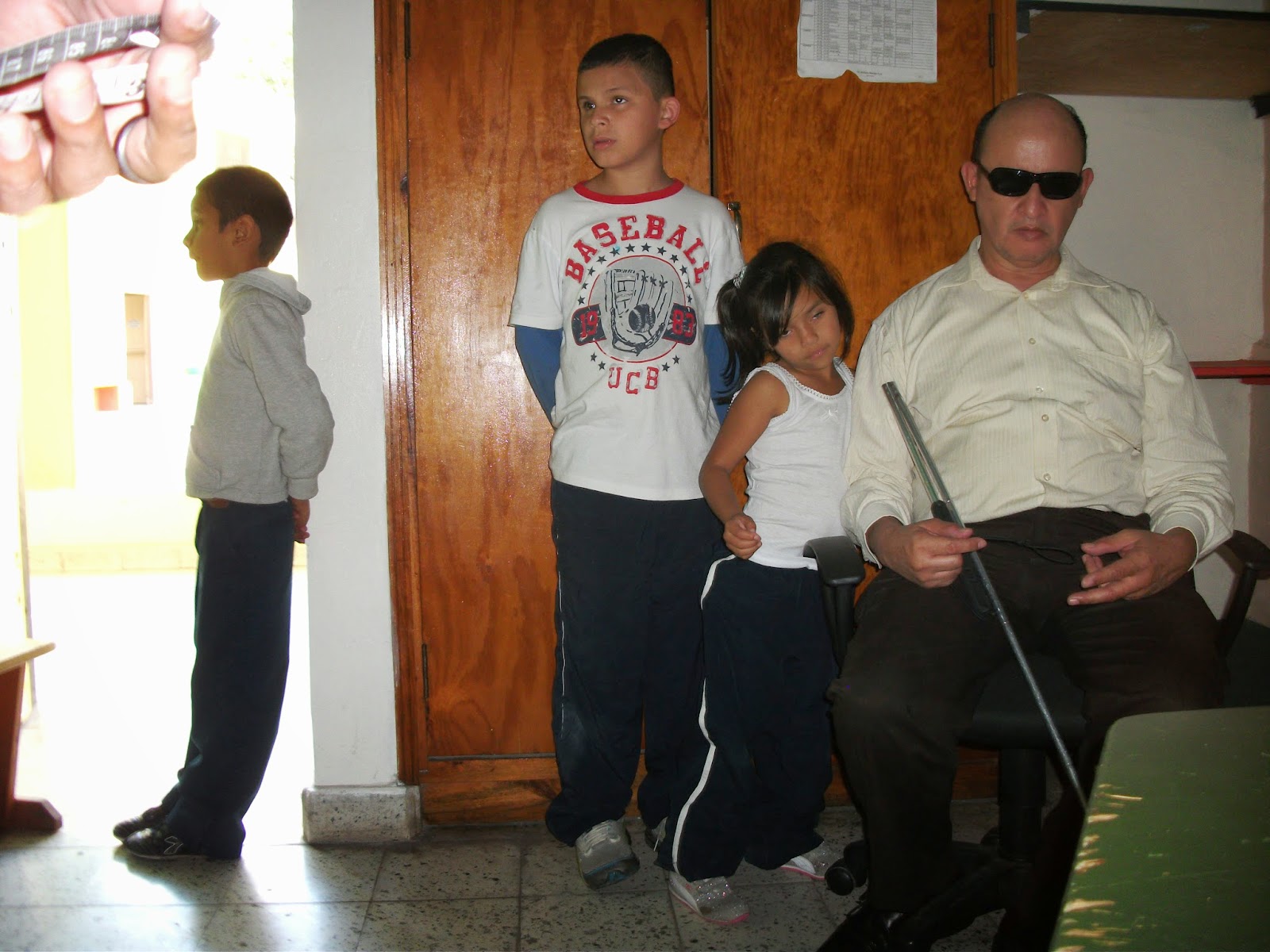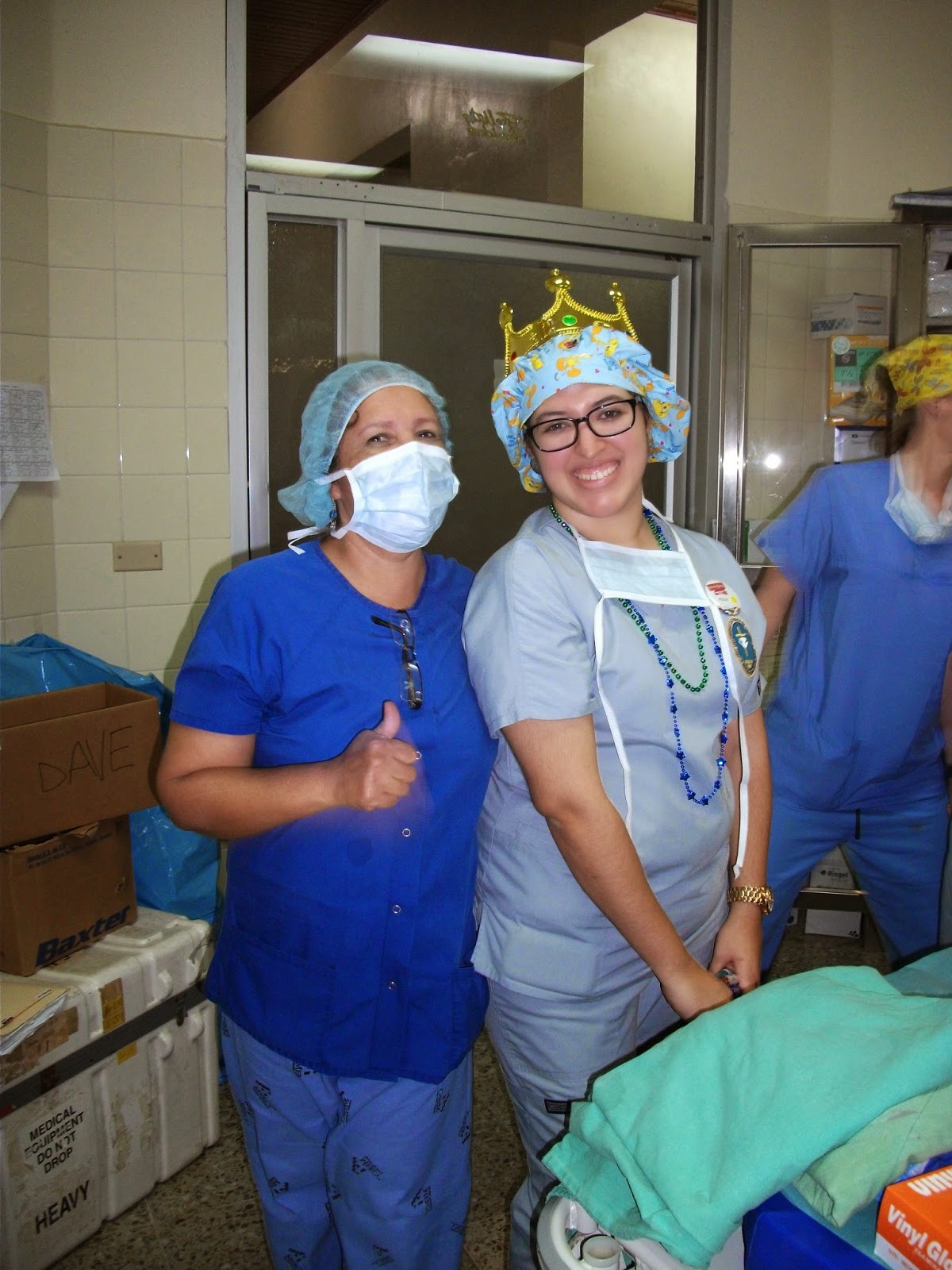Above are only photos I was able to take at the residential school for blind children because guys who had taken photos of kids before were using them to beg for money on buses, hence the prohibition. Children eat with their fingers, girls sitting with girls, boys with boys. The girl in a pink shirt is Maria Lourdes (see section on blind school in my Honduras book). The three kids in the bottom photo are learning conversational English from their blind teacher, who had lived in the US and was pretty fluent. In upper left is a music poster.
The Operation Smile brigade took place at San Felipe public hospital in Tegucigalpa, where I used to take young patients when I was a Peace Corps health volunteer in Honduras. My role was as an interpreter, entertainer of kids waiting for surgery, and food server for visiting surgeons, mostly from the US, but 2 from Brazil this time, and a couple of Honduran surgeons as well. We also took food over to out-of-town relatives staying at the hospital shelter (where I sometimes stayed with my patients when I was a volunteer--sleeping on plastic-covered cots all lined up in a row--women and children in one section, men in another). The incidence of congenital lip/palate malformations seems to be diminishing among Honduran newborns, indicating that the message of maternal nutrition, especially folic acid, is getting through. But many kids who already had surgery at younger ages needed follow up, for example, lip surgery (easier) may have been done previously, but not (harder) palate surgery. For kids 15 and older needing only lip repair, sometimes this was done without general anesthesia. Those waiting to be evaluated included a mother and son both with lip/palate problems--was that due to heredity or nutrition? Five children were always being operated on at once, 3 in one operating room, 2 in the other, for 150 surgeries in all during a week. First, the patients were evaluated. Then they waited their turn and fasted during the day while being entertained with toys. One adult could enter the waiting room with each child, but other family members waited out in the hall. In a hospital patio, a mobile unit had become a fixed structure. I also visited my friends at the hospital occupational therapy department (2 patients are seen doing hand exercises I the first photos I will attempt to post) and gave them some medical items. At the eye clinic, I donated Rx glasses. You can see how hospital records are kept.. The check for $6,750 (dollars) from a Honduran group in NJ is for "27 smiles." Honduran volunteers with the program for the last 15 years have told me they've never lost a patient from either anesthesia or infection, a pretty good record, especially since other surgical teams go to other parts of Honduras during the year, so hundreds of kids have operations each year under less than ideal circumstances. Can you imagine a non-medical person like myself allowed into the operating room of a hospital here and allowed to take photos? No, you cannot, and I am witness to that in my work as a Spanish hospital interpreter in DC. No medical lawsuits that I know of in Honduras--patients are just glad to get care which, in the case of Operation Smile, is free. The final posting in this series will be about my return home after Honduras.
Occupational Therapy above, Operation Smile below





























No comments:
Post a Comment